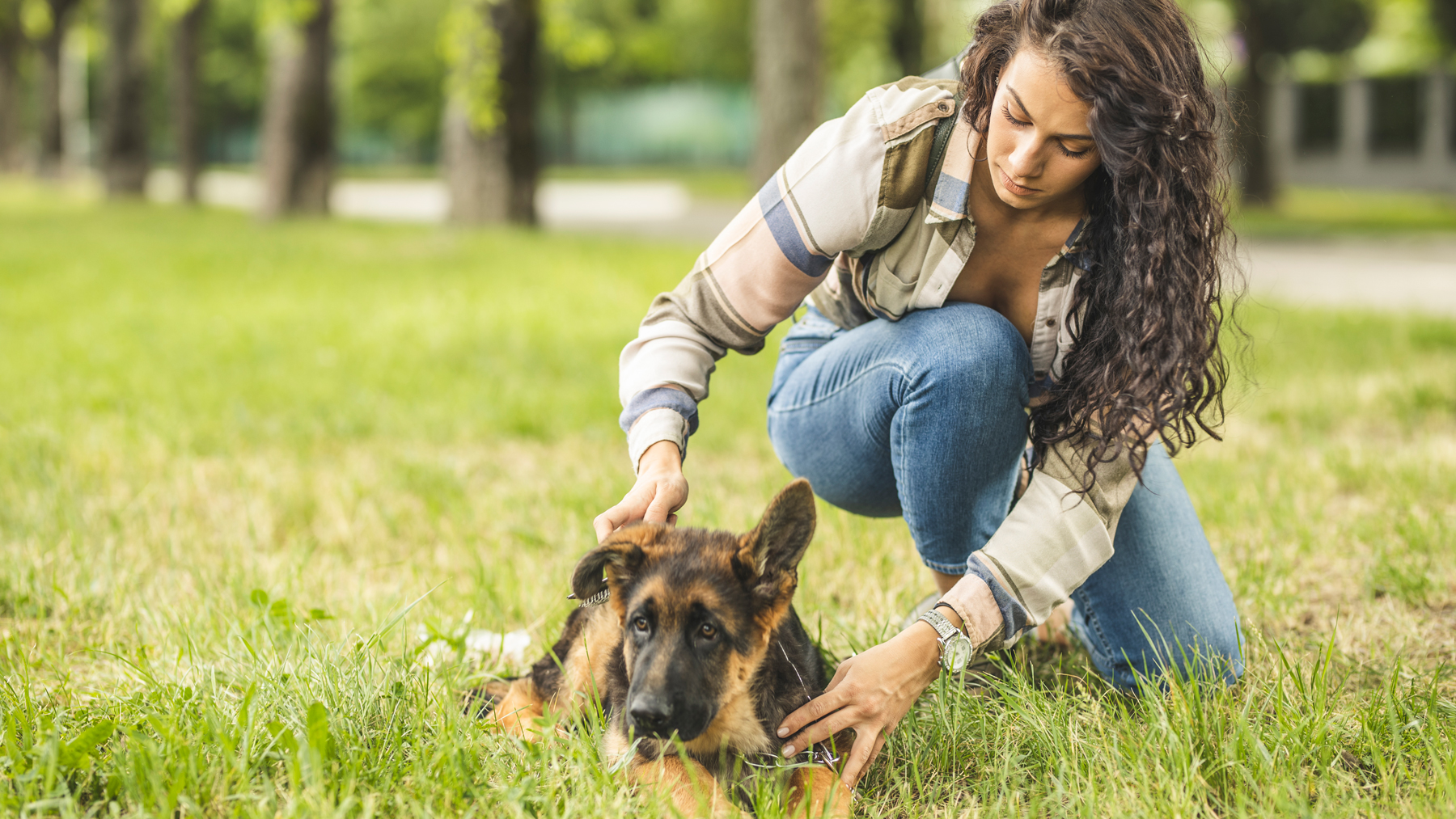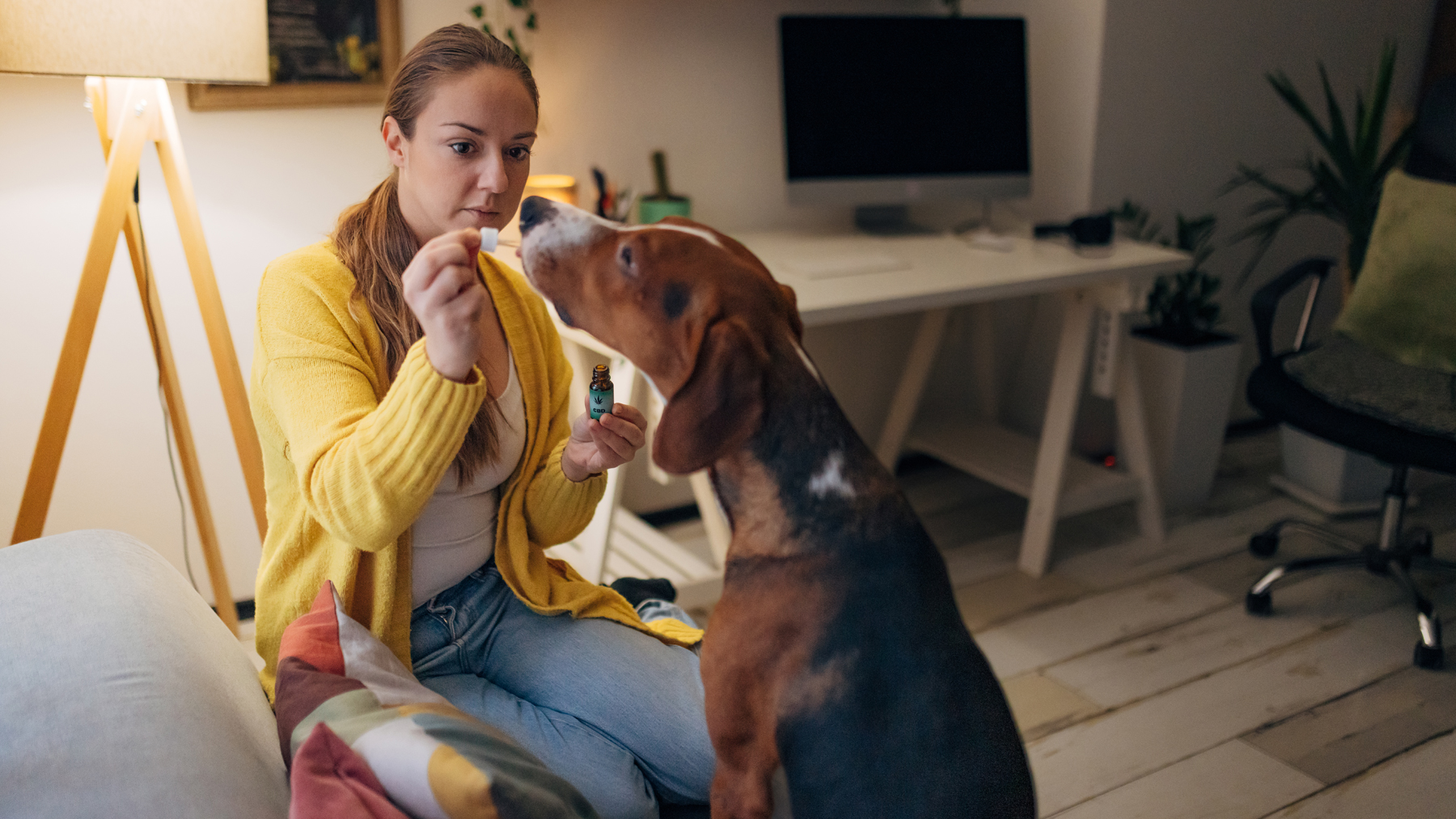What is desensitization for dogs?
Dog behaviorist discusses all you need to know about desensitization for dogs and how can it help you

Desensitization for dogs is a powerful tool used in dog training and behavior modification. Desensitization can help canine companions to overcome fears and anxieties that they may experience while living in our human world.
Dogs can encounter various triggers that make them feel uncomfortable or scared. This might include other people or dogs, loud noises, new environments, or unfamiliar objects. The aim of desensitization is to gradually expose our four legged companions to these triggers in a controlled and positive way, allowing them to build confidence and develop a more relaxed response over time, reducing symptoms of anxiety in dogs.
Desensitization for dogs can be part of a range of tools recommended by canine behaviorists when working with clients to help them understand how to calm a reactive dog. Desensitization is usually paired with another process - counter-conditioning - by breaking down exposure to the trigger into small, manageable steps and also pairing it with the best dog treats and positive experiences. Desensitization may help dogs become less reactive and more resilient, ultimately improving their overall well-being.
What is desensitization for dogs?
The American Psychological Association defines ‘desensitization’ as: “a reduction in emotional or physical reactivity to stimuli that is achieved by such means as deconditioning techniques”. Essentially they say that it is the calming down of emotional or physical reactions to triggers through techniques like deconditioning.
Desensitization for dogs, often known short-hand as ‘DS’, is a very similar process as that for humans. The trigger - or stimulus - is presented to the dog in as low-intensity a manner as possible. For example, this could be playing the sound of fireworks at volume one on your speaker or having a cuddly toy dog, rather than a real one, placed 100 feet away.
It’s important to be able to understand what level of exposure to the trigger the dog is able to cope with at any given point throughout the desensitization process. It’s therefore vital to be able to read your own dog’s - or the dog you are working with - body language. We need to ensure that the dog being supported never feels discomfort, to avoid validating its previous fearful responses. When you have assessed how intense the exposure to a trigger your dog can cope with, you can begin your desensitization program.
If we take the example of a fear of fireworks, your first session may contain short exposure to the sound of fireworks being played through a speaker very quietly. Each time the sounds play, we watch the dog to ensure they stay calm and do not respond fearfully. We can boost these experiences by adding in something the dog likes - such as play with their favorite puppy toys or treats. This helps the dog to enjoy new positive memories around the trigger, hopefully leading to an improved emotional response being created. Over time, the volume of the fireworks sounds can be slowly increased during these desensitization sessions. Also, feel free to check out PetsRadar’s 10 ways to calm your dog during fireworks.
Get the best advice, tips and top tech for your beloved Pets

When can desensitization be used?
Desensitization can be used whenever a dog has a negative response to a stimulus. Most dogs who struggle with fears can learn fairly easily to create new responses to those stimuli as long as they have exposure at the right level for them. In some cases, pharmaceutical medication - such as Gabapentin - may be needed, short-term, to help the dog cope at the lowest of intensities if they are unable to do so.
Desensitization programs may be used when a dog has a fear of social encounters. This might be generalized to either all people or all dogs - perhaps even both - or it could be more specific. Many dogs, for example, have difficulty reading the body language of black dogs, extremely fluffy dogs, or those classed as Brachycephalic. In these cases, stooge dogs - who are used throughout the desensitization program - need to be selected based on breed and look.
Fear of noises can also be treated using desensitization. It’s important to note that many noise-phobic dogs struggle with pain and discomfort, so veterinary input is definitely required to assess this first before starting the training. Noise phobias can be quite context-specific such as thunderstorms and fireworks, which means we need to utilize recordings of sounds to be able to use throughout the program as we can’t dampen down the ‘live action’ version of these events. However if, for example, it were the sound of people raising their voice loudly that was an issue for the dog, we can use real human voices and just instruct them to speak at a certain level at each stage.
Situational fears can also occur - this might be linked to traumatic experiences or poor socialization as a young dog. Here we might see a dog being scared of visiting the vets or grooming parlor - or even walking along the sidewalk if traffic is a concern.
Is desensitization different from counter-conditioning a dog?
Although desensitization for dogs (DS) and counter-conditioning (CC) are two different approaches used to modify dog behavior, they are often paired together. While desensitization focuses on gradually exposing the dog to the source of their fear or anxiety in a controlled and sensitive manner, counter-conditioning aims to change the dog's emotional response to the feared or disliked stimulus by associating it with something positive.
With counter-conditioning, the goal is for the dog to form positive associations and replace fear or anxiety with feelings of pleasure and relaxation. We might add high value treats on exposure to the stimulus or a scary experience may now predict that they’re about to get to play with their human.
So, while desensitization focuses on reducing the dog's reactivity to the stimulus, counter-conditioning aims to change the emotional response altogether. Together, these techniques can be powerful tools in helping dogs overcome fears and anxieties, ultimately leading to more confident and well-adjusted pets.
How do you desensitize a dog that is scared of everything?
When a dog is highly sensitive to the world around them, we need to first make sure that they are physically well. Many dogs struggle emotionally when they are physically uncomfortable - especially when in pain. It may also be that the dog in question has had such a traumatic past that they are struggling to move forward and create any new connections within their brain. In these situations, pharmaceutical support may be required to help the dog to be able to cope with life and be available to work with the human trying to support them.
When a dog is scared of multiple experiences or subjects, then it’s important to take things really slowly - usually working with just one trigger at a time while managing the rest of their life to stay relatively calm.

How effective is desensitization for dogs?
The efficacy of the desensitization for dogs process depends on the speed the human moves through the process. It’s important that we always keep the dog within the exposure level that they can comfortably cope with. This means that the dog should remain relaxed while noticing the trigger but not feeling the need to emotionally respond to it.
When we take things slowly, at the dog’s speed - and work with counter-conditioning alongside desensitization - then the process can be highly effective. It’s possible for dogs to not only gain confidence around the stimulus they previously feared but in fact even enjoy its presence.

Caroline Wilkinson is a Certified Animal Behaviorist. She is a Full (assessed) Member of the Association of Professional Dog Trainersand INTODogs – as well as a Registered Training Instructor (ABTC). Caroline is also a Certified Real Dog Yoga Practitioner and an Applied Canine Zoopharmacognosist.
As the founder of digital pet coaching service Barket Place, Caroline has a passion for improving connections between human and hound, with a focus on relationships and reduction of stress for canines living in a human world. She helps pet parents, like you, to work through challenges they may be experiencing with their dog's behavior, so that they can get back to the important job of loving their dog.
Caroline writes for Edition Dog Magazine, as well as a number of trusted pet brands. She also speaks around the country – presenting workshops and webinars with a focus on living more mindfully alongside our canine companions. She is also the co-host of chart-topping podcast, ‘Supporting Both Ends of the Lead’ and has spoken about dangerous dogs on BBC Points West and BBC Radio Bristol.
